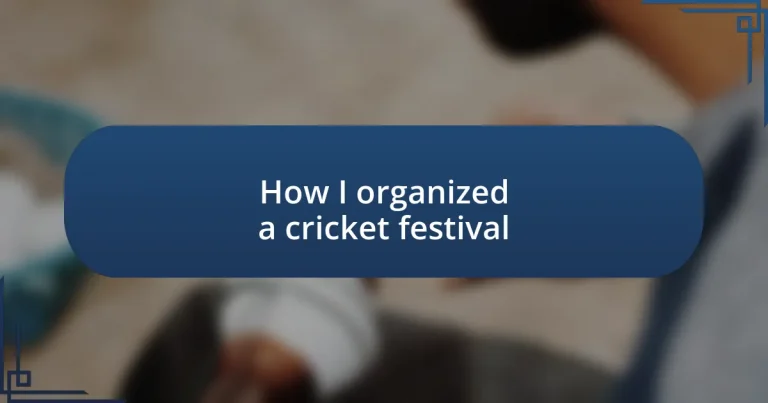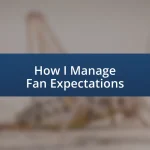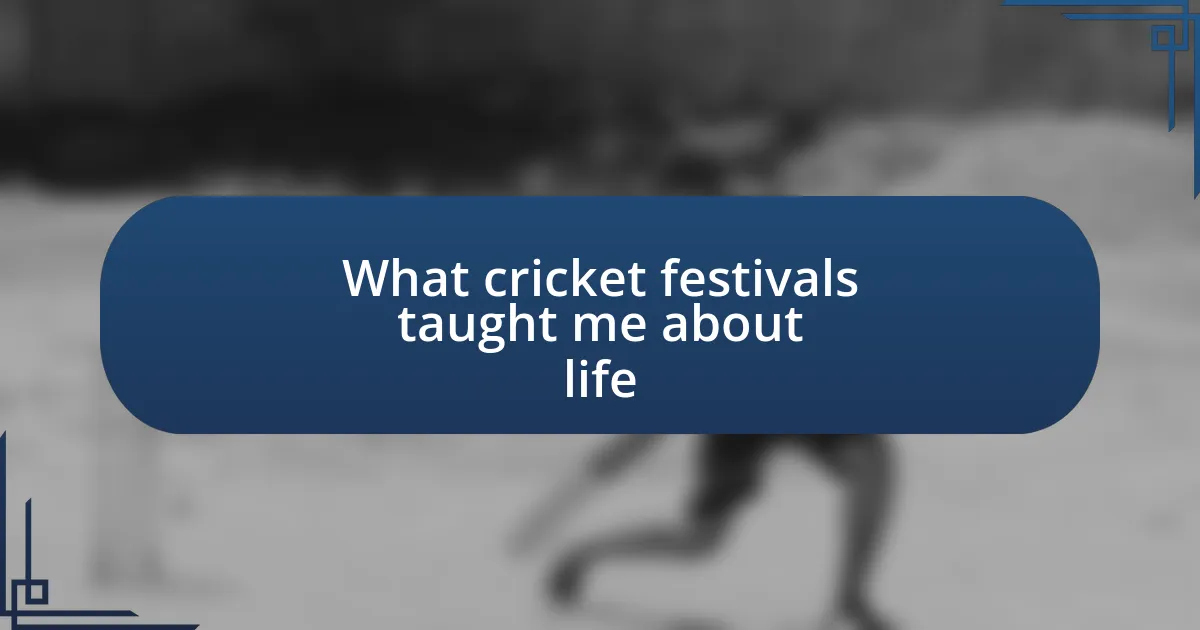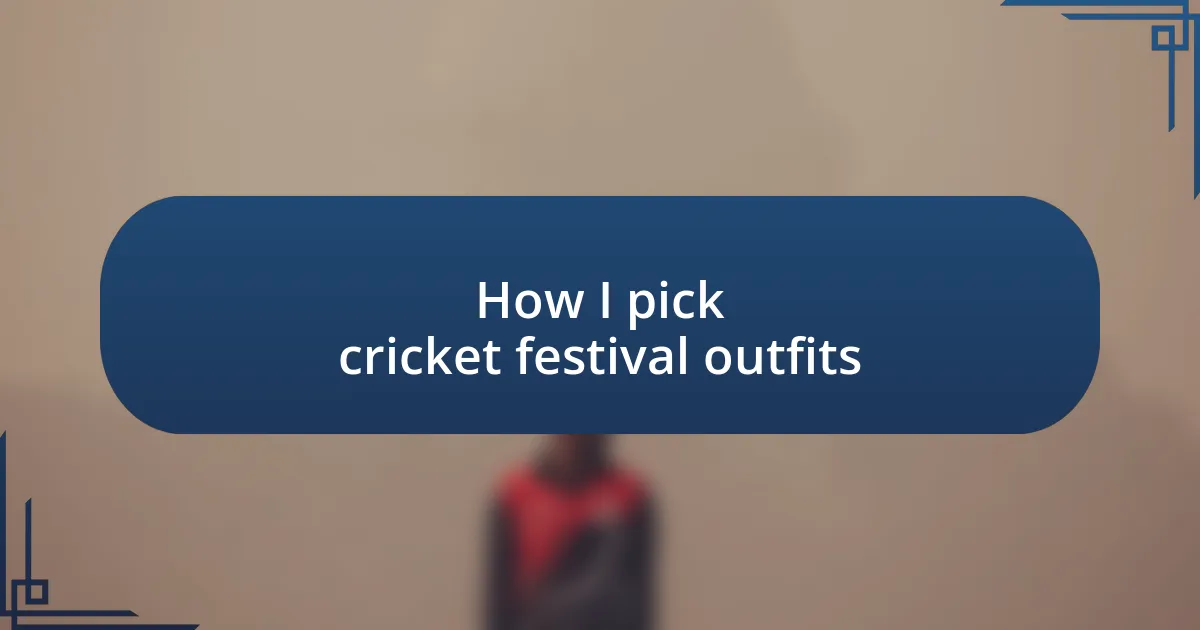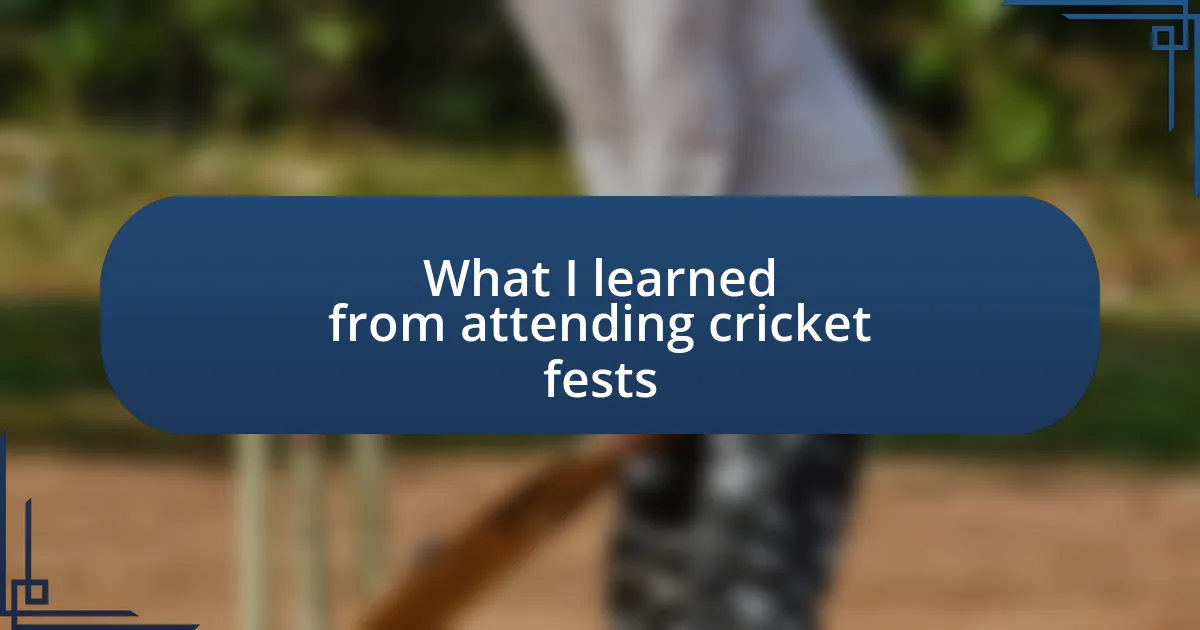Key takeaways:
- Choosing the right date and venue involves considering weather, local events, accessibility, and atmosphere to maximize attendance and enjoyment.
- Building community through securing sponsors and engaging local businesses enhances event visibility and fosters communal pride.
- Effective promotion using social media and personal connections creates excitement and draws participants to the festival.
- Evaluating the event’s success goes beyond attendance; feedback from participants, sponsors, and volunteers is crucial for improvement and future growth.
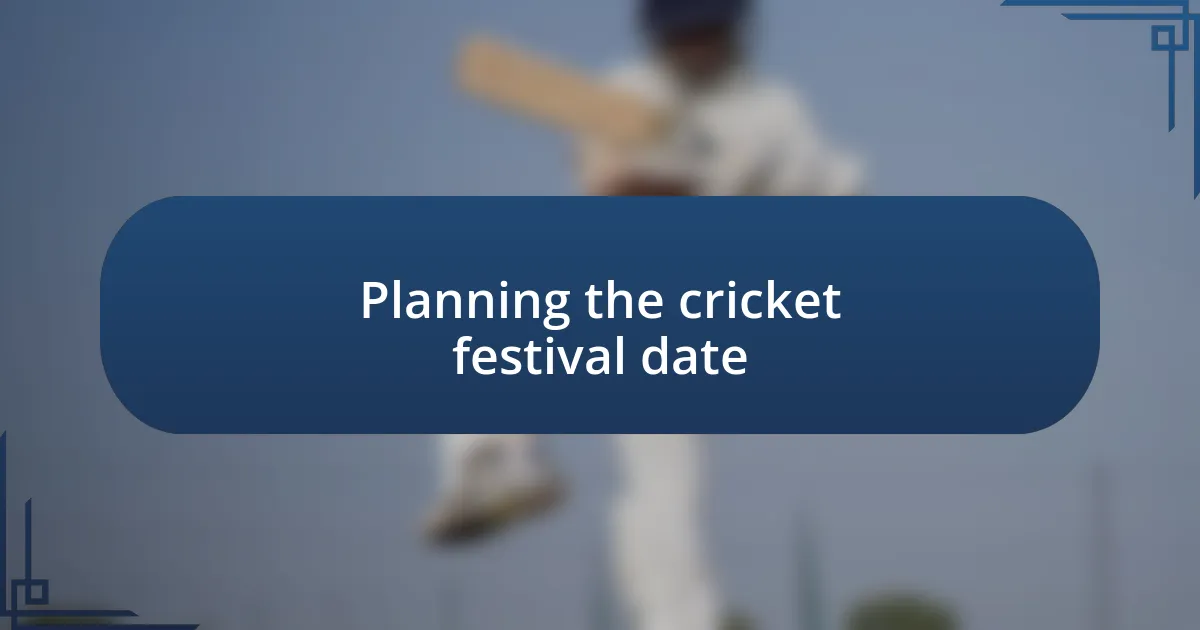
Planning the cricket festival date
Choosing the right date for a cricket festival is crucial. I remember feeling that rush of excitement when I marked potential weekends on my calendar. Would it be the holiday weekend that families could make the most of? Or would a mid-season date attract more local talent?
One of the key factors I considered was the weather. Living in an area known for sudden rain showers, I felt apprehensive about the timing. I recall analyzing historical weather patterns, thinking, “Can I risk scheduling this festival and trusting the skies to cooperate?” This added an extra layer of tension, but in the end, I learned that planning a flexible day with contingency options could alleviate some of that anxiety.
I also thought about local events happening at the same time. I asked myself, “Would competing festivals draw away potential attendees?” Ultimately, I found that collaborating with other organizers could be beneficial. I reached out to a few and discovered that aligning our events could enhance the cricket festival’s visibility and overall appeal.
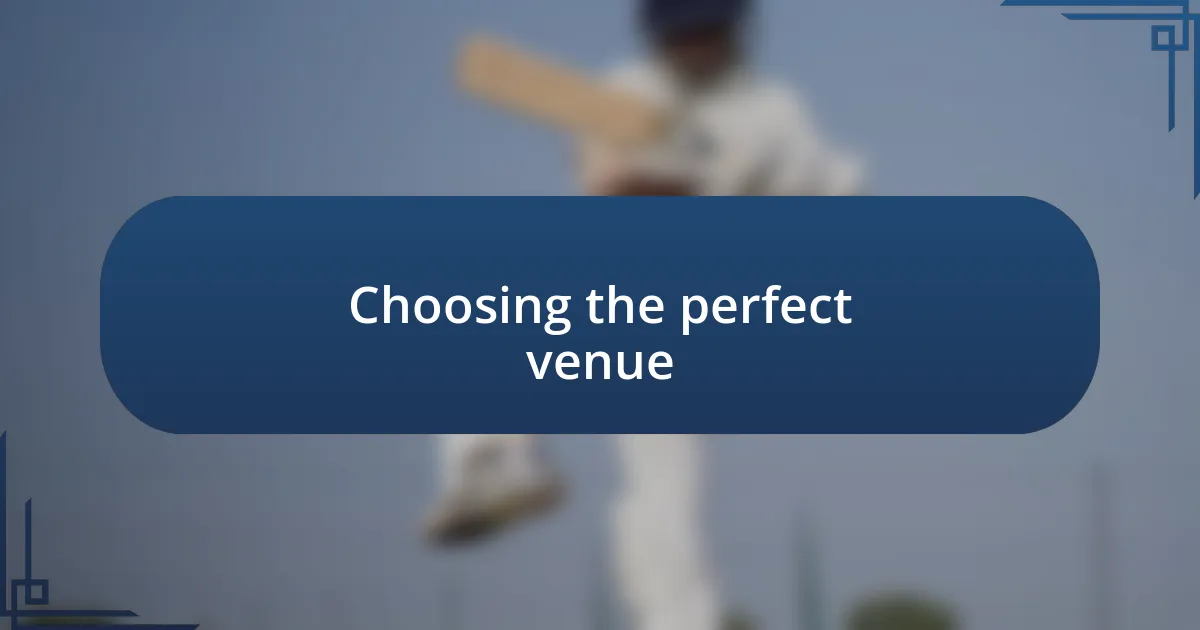
Choosing the perfect venue
Selecting the ideal venue was a pivotal part of the planning process. I spent numerous evenings visiting various locations, imagining the festival’s energy in each space. One site, nestled within a local park, tugged at my heartstrings with its lush greenery and open skies, providing an inviting backdrop for families to come together and enjoy cricket. I thought about how joyful it would be to see children running around while parents shared in the excitement.
Another main consideration was accessibility. I felt relieved when I found a venue that was not only spacious but also conveniently located near public transport. I reflected on how frustrating it could be for attendees to navigate long drives or parking challenges. Ensuring everyone could easily reach the festival maximized our chances for a larger turnout, which, after all, was the ultimate goal.
The atmosphere of the venue also played a significant role in my decision-making. I remember vividly the warmth and vibrancy of one particular space, where sunlight filtered through the trees, creating a beautiful setting. This made me realize that the right ambiance could enhance attendees’ experiences. I aimed to choose a place that felt inviting, as the right venue can transform an event from ordinary to extraordinary.
| Venue Aspect | Considerations |
|---|---|
| Location | Is it easily accessible for guests? Consider public transport and parking availability. |
| Capacity | Can the venue accommodate the expected number of attendees comfortably? |
| Amenities | What facilities are available? Look for restrooms, concession stands, and seating. |
| Atmosphere | Does the venue offer an inviting and engaging backdrop for the festival? |
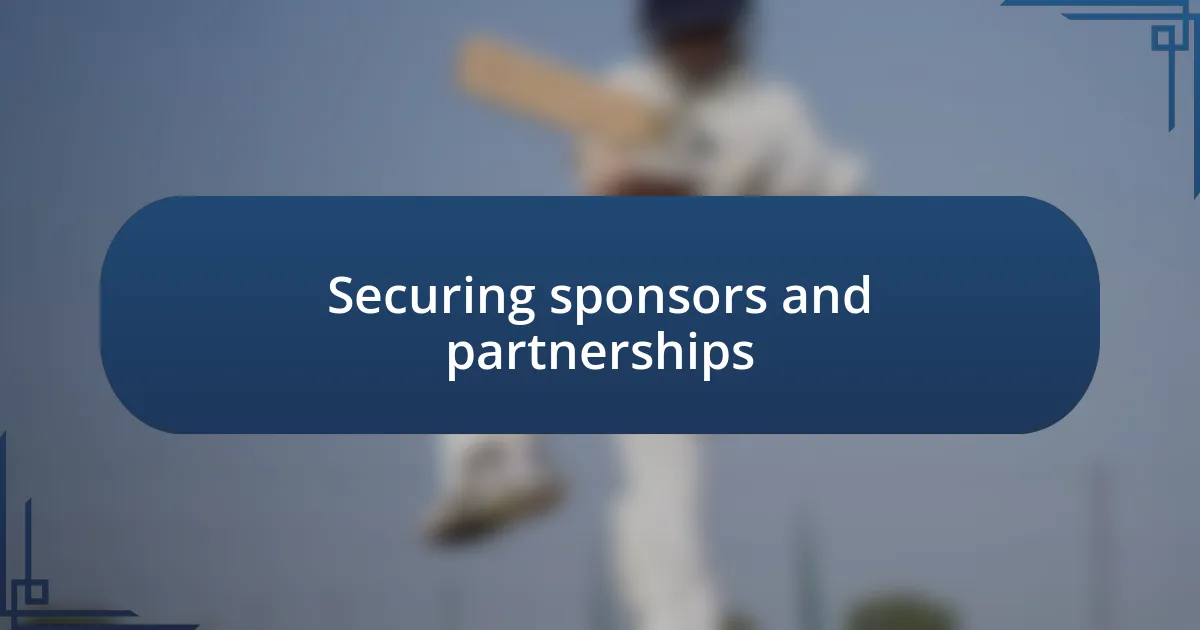
Securing sponsors and partnerships
Securing sponsorships and partnerships was one of the most crucial steps in organizing the cricket festival. I vividly remember the excitement of reaching out to local businesses; it felt like building a community rather than just seeking funding. Establishing genuine connections was key—I shared my vision for the festival and how it would celebrate cricket while bringing together families. This approach resonated well, as many were eager to contribute and be part of something impactful.
To effectively secure sponsorships, I focused on presenting a value-driven proposal that highlighted mutual benefits. Here’s what I included in my outreach:
- Audience engagement: Demonstrating the potential reach to a diverse crowd.
- Brand visibility: Offering logo placements on marketing materials and event signage.
- Community involvement: Emphasizing how their support would enhance local community bonds.
- Partnership opportunities: Discussing ways to collaborate, such as joint promotions or contests.
Building these relationships not only provided financial support but also created a sense of communal pride. I felt a surge of gratitude for each partner who believed in our mission.
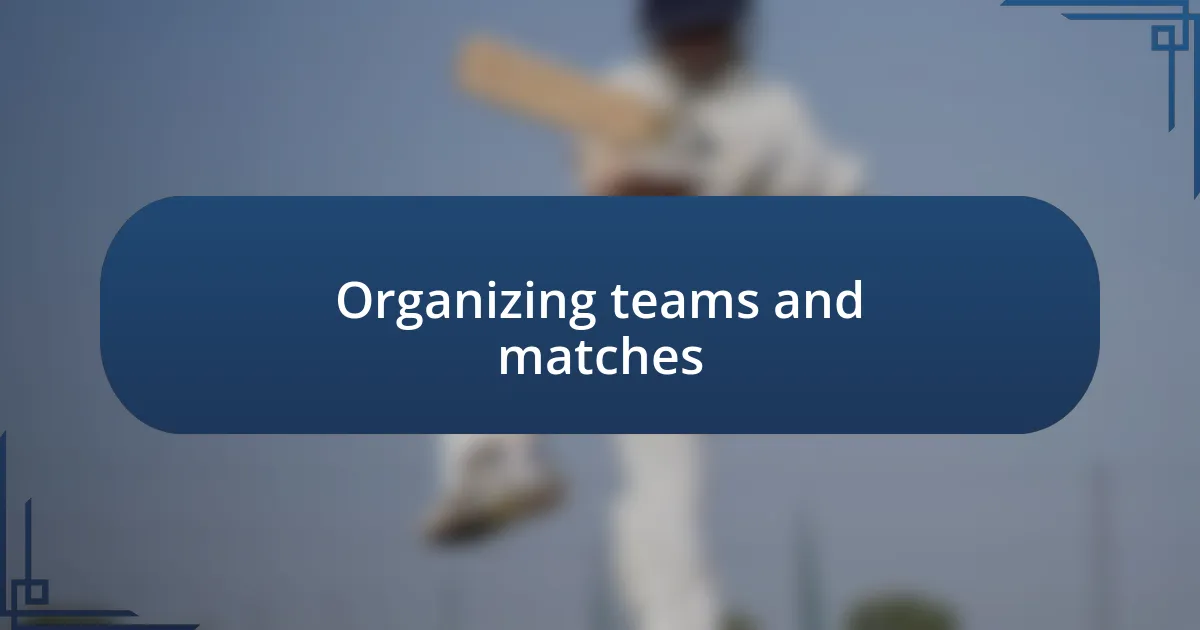
Organizing teams and matches
When it came to organizing teams and matches for the cricket festival, I found myself diving into a whirlpool of excitement and logistics. Forming balanced teams was essential; I utilized online forums and local clubs to recruit players, ensuring a mix of experience and enthusiasm. I remember the thrill of coordinating initial practice sessions, where laughter and friendly banter filled the air—quite the bonding experience for everyone involved.
As matches approached, I faced the challenge of creating a schedule that accommodated everyone’s availability. I quickly learned that flexibility was the name of the game; some players had unexpected commitments, while others were eager to play twice. Have you ever attempted to juggle multiple schedules? I did, and it required a lot of patience and quick adjustments. I also set up a reliable communication channel so that all participants stayed informed about any last-minute changes—this really helped calm my nerves.
Another aspect I took seriously was the spirit of friendly competition. I organized a draft system for the teams, which not only made it fairer but also added an element of fun. There was an undeniable buzz during the selection, like witnessing kids choosing teams at recess. I relished watching the camaraderie build as players bonded over their shared passion for cricket, reminding me of why I embarked on this journey in the first place.
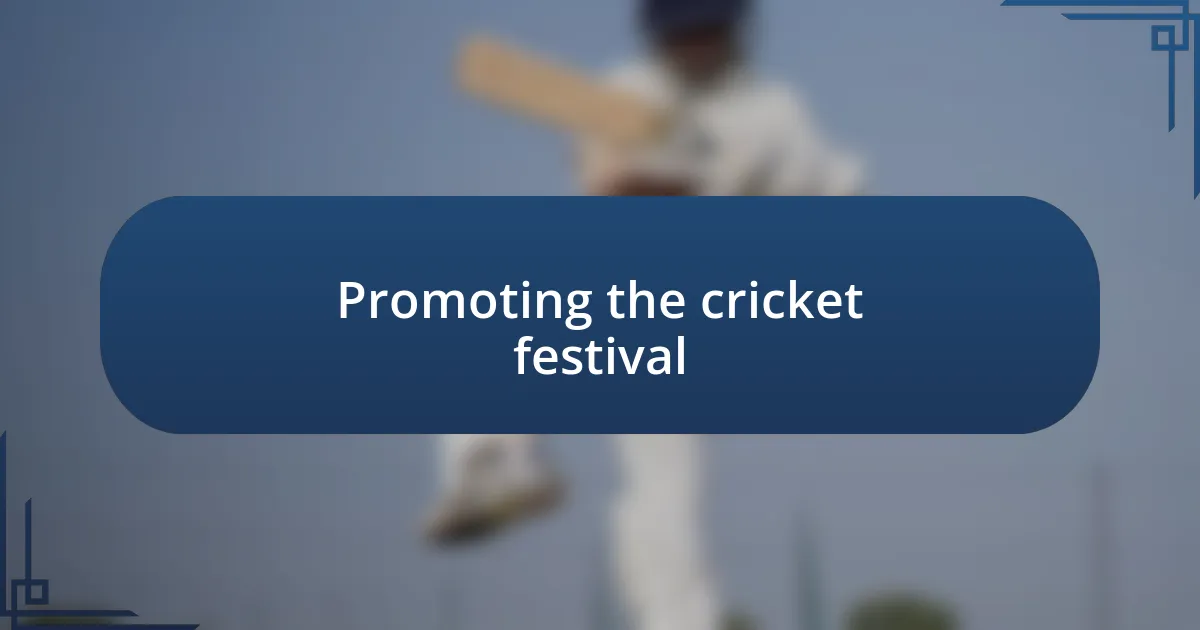
Promoting the cricket festival
Promoting the cricket festival was a thrilling challenge in itself. I turned to social media as my primary platform, crafting engaging posts filled with vibrant images from practice sessions. It’s amazing how a single photo of a player mid-swing can capture the spirit of the game. I also created an event page that not only shared match details but encouraged participants to share their own experiences and invite friends. This personal touch fostered excitement and anticipation among the community.
I recall the evening when I hosted a local meet-up to spread the word. It felt exhilarating to discuss the festival face-to-face, exchanging ideas and garnering support. I remember someone asking, “What makes this festival different from others?” It struck me how important it was to emphasize not just the games, but the festival’s essence—celebrating cricket as a community. By sharing anecdotes about the friendships I had built through the game, I could vividly illustrate why others should join in.
Lastly, I leveraged local businesses for sponsorships, creating a win-win situation that benefitted everyone involved. I approached a nearby sports store, and to my delight, they agreed to provide prizes for winners in exchange for promoting their brand during the festival. Just imagine the satisfaction of seeing local businesses rally around an event that ignited their community spirit! Each partnership not only enhanced our festival’s profile but also strengthened the fabric of our cricket-loving community.
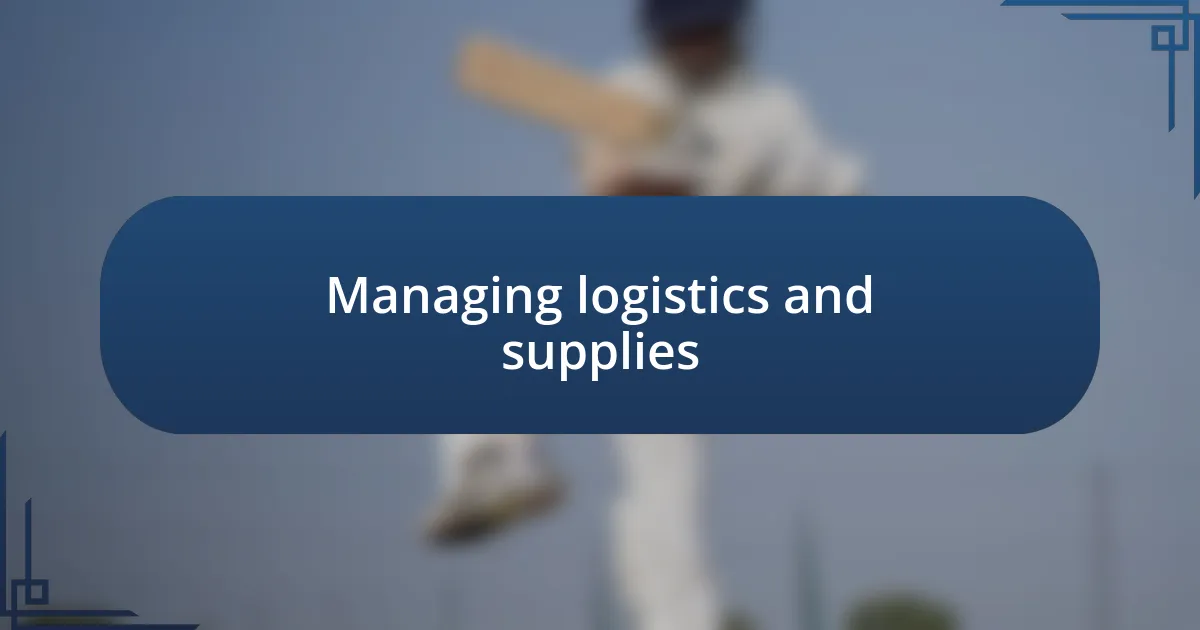
Managing logistics and supplies
Managing logistics and supplies is where the nitty-gritty really comes into play. I remember staring at a massive checklist a week before the festival and realizing just how much was left to arrange. From securing enough cricket equipment for players to coordinating food vendors, it felt like riding a rollercoaster—exhilarating yet nerve-wracking.
One of my biggest learning moments came during the supply drop. I had naively assumed that suppliers would be punctual and organized. When the tents arrived late, I could see the panic set in among the volunteers. But then, with some quick thinking, we adjusted our setup tasks, transforming the delay into a bonding experience as we worked side by side, laughing off the stress while prepping for a successful day ahead.
Looking back, I think the key was creating a solid communication plan with everyone involved. Regular check-ins helped us stay aligned, even when things got hectic. How could I keep everyone focused and motivated amid the chaos? By sharing my vision for the day and celebrating our smaller wins along the way, the team felt more engaged and committed. It was a reminder that every small detail, from refreshments to equipment, played a crucial role in crafting an unforgettable experience for all those involved.
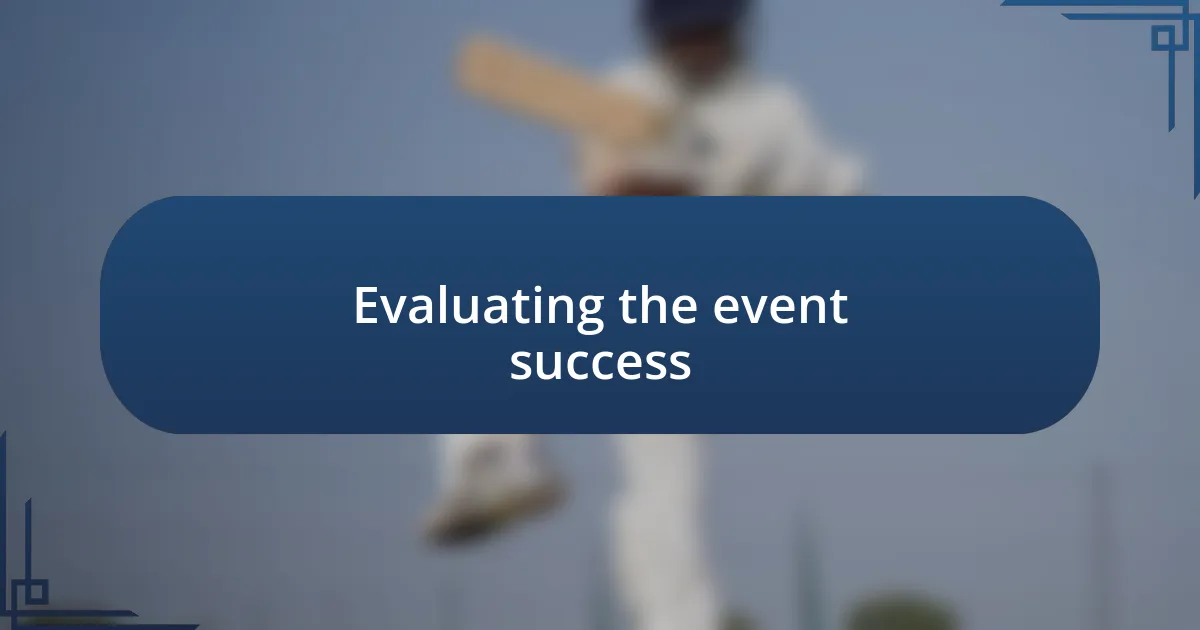
Evaluating the event success
Evaluating the success of the cricket festival was a multi-layered process that went beyond mere attendance numbers. I remember standing under the beautiful blue sky, chatting with participants and attendees, and realizing that the smiles on their faces were the true indicators of our success. Wasn’t it amazing to witness families bonding over the game, laughter echoing as children played together? These moments were worth more than any statistics could show.
We also sought feedback from local businesses involved in the festival. One vendor shared how they had underestimated their stock needs based on previous events, making it a rush to meet demand. Reflecting on this, I realized that collaboration can yield valuable insights. How can we foster stronger partnerships in future events? By listening and learning from these experiences, I felt we could enhance subsequent festivals, turning any setbacks into opportunities for growth.
Lastly, I gathered input from volunteers who poured their energy into making the festival happen. Their enthusiasm was infectious, yet they voiced concerns about areas that needed improvement, like signage and clarity in roles. Understanding their experiences truly shaped my perspective on success. If our volunteers felt valued and heard, wouldn’t the festival have a lasting impact not just on the attendees but on everyone involved? I believe that assessing success should encompass not only what went right but also what we can do better next time.
